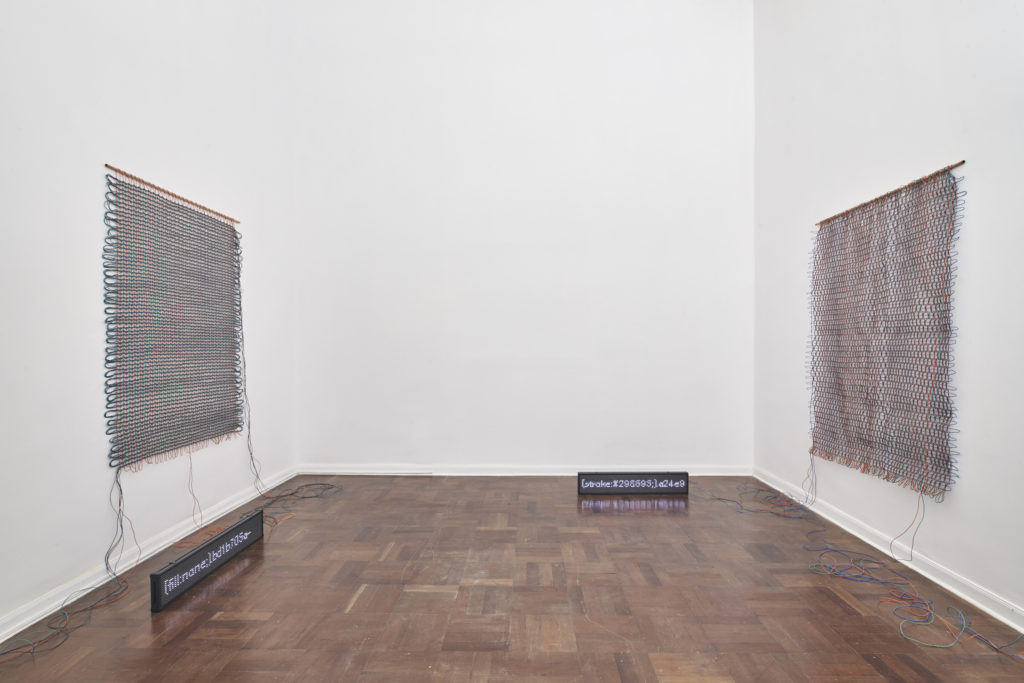
Redes de conversión
25.10.2021
–
26.03.2022
Ximena Garrido-Lecca
Press release
Redes de conversión presents a series of textiles made with insulated copper wires, creating patterns and designs based on primary structures of pre-Columbian weaves.
During the elaboration of these pieces, a basic language was developed that represented the action of weaving (and twining) of the cables. By analyzing the weft and warp of each of the pre-Columbian textiles, the repetitions of shapes and colors were transcribed into a written notation system, in order to identify the basic patterns, and thereafter represent their essence. This language – initially represented by diagrams, arrows, numbers, and codes in handwritten notes – was shared with a group of system programmers to be “translated” into a logical programming code. The weaving patterns were interpreted as constants, to then develop a language based on commands through java script (one of the most used programming codes nowadays). In the case of the textiles with twining elements, a graphic program was used to convert the interlaces and knots to a vector system, translating them into code.
During the elaboration of these pieces, a basic language was developed that represented the action of weaving (and twining) of the cables. By analyzing the weft and warp of each of the pre-Columbian textiles, the repetitions of shapes and colors were transcribed into a written notation system, in order to identify the basic patterns, and thereafter represent their essence. This language – initially represented by diagrams, arrows, numbers, and codes in handwritten notes – was shared with a group of system programmers to be “translated” into a logical programming code. The weaving patterns were interpreted as constants, to then develop a language based on commands through java script (one of the most used programming codes nowadays). In the case of the textiles with twining elements, a graphic program was used to convert the interlaces and knots to a vector system, translating them into code.
Redes de conversión
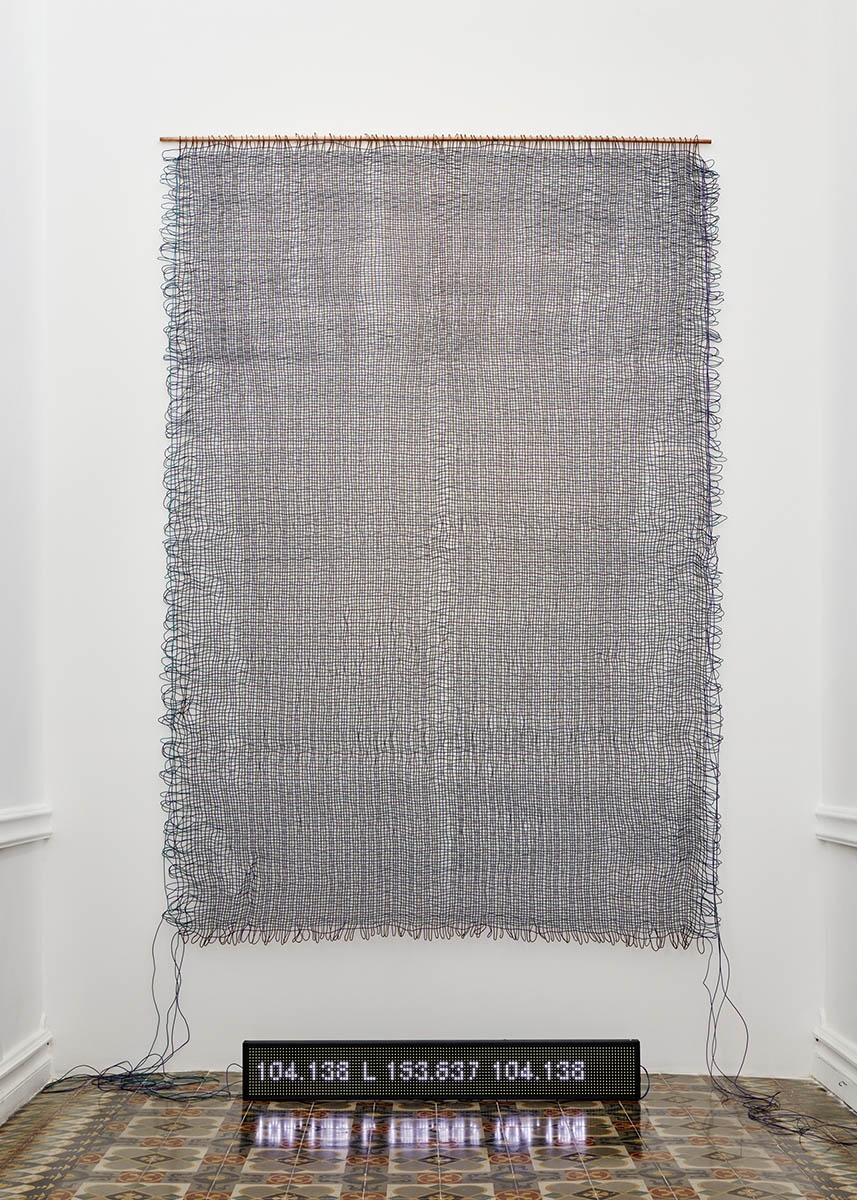
Ximena Garrido-Lecca
“Redes de conversión: Variaciones de tejido liso (morado, gris, verde y marrón)”, 2021
Insulated copper wires and LED panel
298 x 200 cm
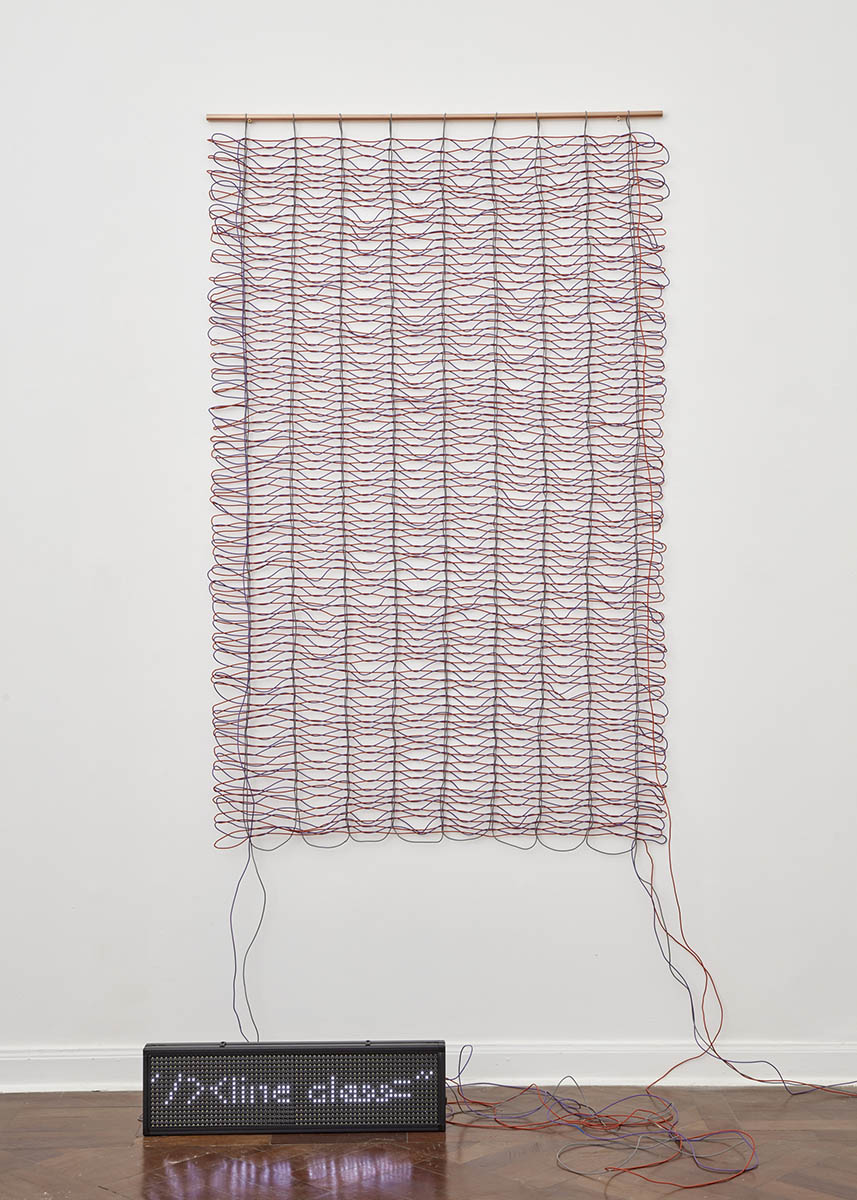
Ximena Garrido-Lecca
“Redes de conversión: Puntadas de enlace sobre elemento de base (morado, rojo y gris)”, 2021
Cables de cobre revestido y panel LED
178 x 110 cm
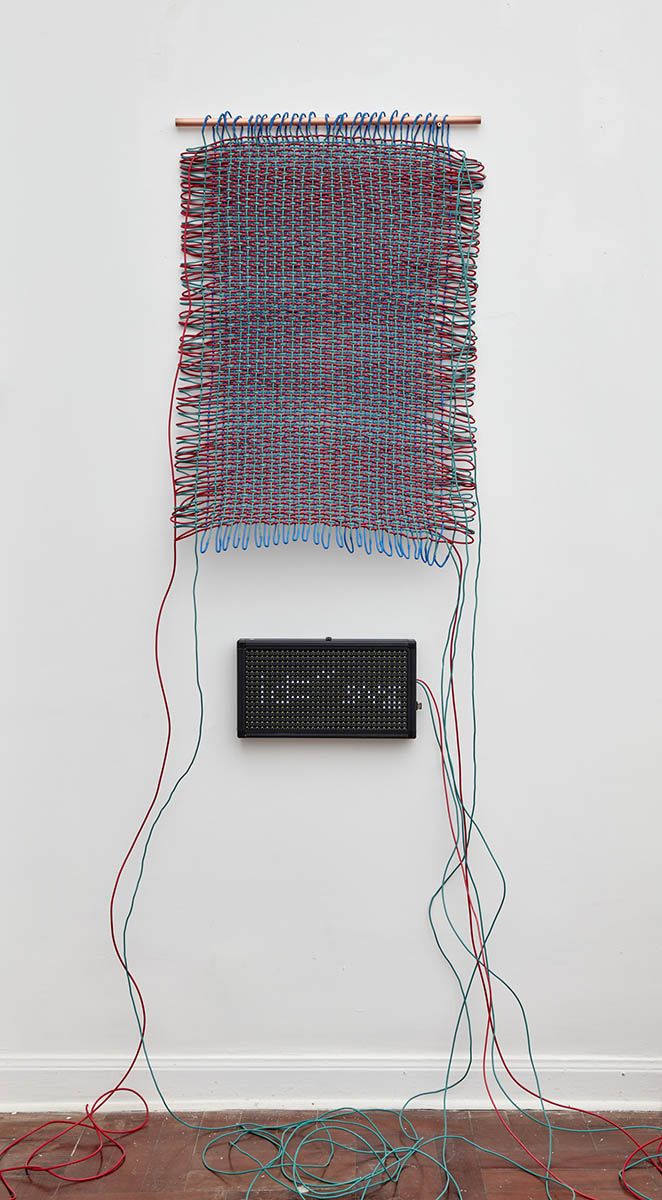
Ximena Garrido-Lecca
“Redes de conversión: Tejido flotante alternado (verde, rojo y azul)”, 2021
Insulated copper wire and LED panel
87 x 60 cm
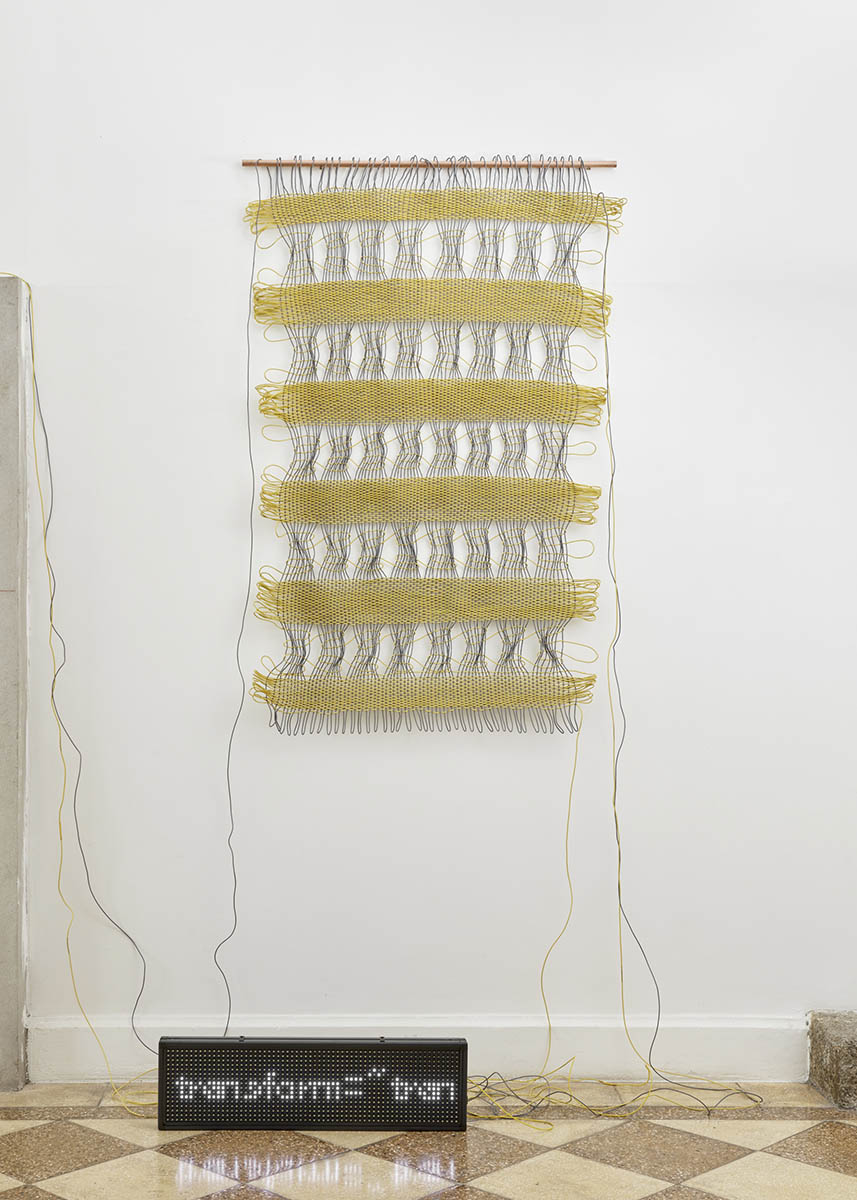
Ximena Garrido-Lecca